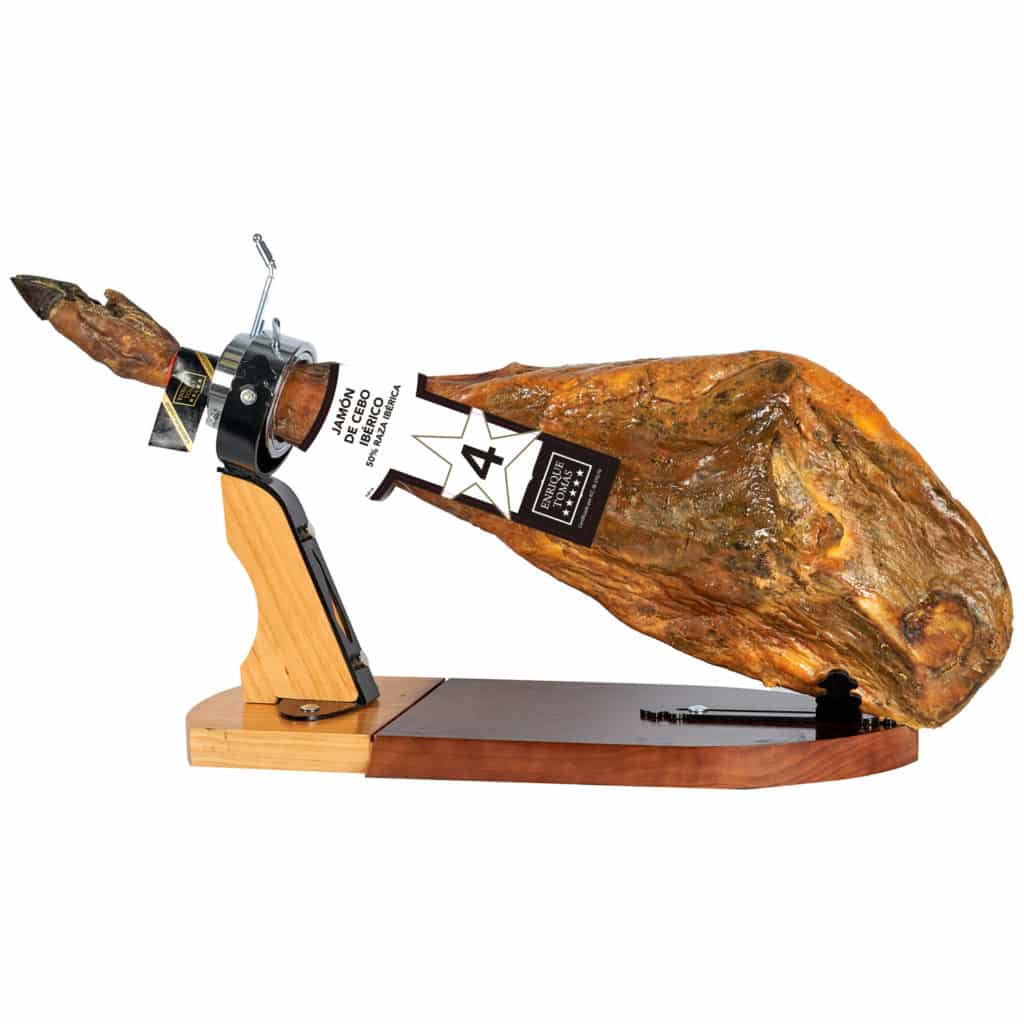
What is Iberian Jamón?
Well, it's any ham that comes from Iberian pigs on our peninsula that are fed with feed. At Enrique Tomás, we know, above all, about Iberian ham, so we're going to explain in great detail what makes this type of ham special and why it's called that way.
You're going to be surprised!
What is cebo ham and what makes it special
The first thing to consider is that Iberian ham is only obtained from the hind legs of Iberian pigs on our peninsula with the ability to infiltrate fat into the muscle, a genetic condition that no other animal in the world has.
The ham obtained from these pigs can be classified into three types based on their diet: acorn-fed Iberian, field-raised Iberian, and cebo Iberian. Next, we'll explain what each one is.
Acorn-fed Iberian
It's all the ham obtained from Iberian pigs that have been fed in the meadows with acorns and other natural products. Thanks to the exercise they get in the mountains, the acorn-based diet, and the unique ability to infiltrate fat into the muscle of this species, a very oily and aromatic ham is achieved.Field-raised Iberian
It is produced from the meat of pigs fed on natural pastures, herbs, and feed, formerly known as "recebo." These pigs have NOT eaten acorns, although it should be noted that if there has been a plentiful acorn harvest, the farmer may have added some to their diet.Cebo Iberian
This delicacy is produced from "fattened" pigs with feed in their adult age, hence its name "cebo." They have not eaten acorns or gone through the "montanera" period.
 4-Star Cebo Iberian Ham Enrique Tomás
4-Star Cebo Iberian Ham Enrique Tomás
What determines the type of ham an Iberian pig produces
Depending on the diet followed by the pigs, the price of their meat will be one or the other, as it does not cost the same to raise them in the mountains, where they have to be transported, as it does in the farms. Acorn-fed Iberian ham is therefore more expensive than cebo ham, but this does not mean it's better; it just means it's juicier and more expensive to produce. In any case, it will be the diner who decides which one they prefer.
Along with this factor, there are three other factors that determine the price of the meat:
- The degree of mechanization of the curing process
- The aging time in the cellar
- The prestige of the brand that markets it
Also, when it comes to selling them, there is another aspect to consider, which is the supply. In Spain, nearly 2.8 million pieces of Iberian pig are produced each year, half of which are hams and the other half are shoulders.

4-Star Cebo Iberian Shoulder Sandwich Enrique Tomás
Could the supply be higher?
No, because the activity of the meadows is controlled, as is the number of trees they have. So, the number of acorns will determine the number of pigs fed with them. On the other hand, the same does not apply to cebo ham or field-raised cebo ham, which can be marketed as many as there are pigs on the farms.
Could you explain now what cebo ham is? Our intention is to promote the culture of ham, so we hope we have helped you learn a bit about this exquisite delicacy.
To wrap it up, now that you know all the theory, there's nothing better than starting with practice, so go ahead and try the best Iberian ham with any of our products.




